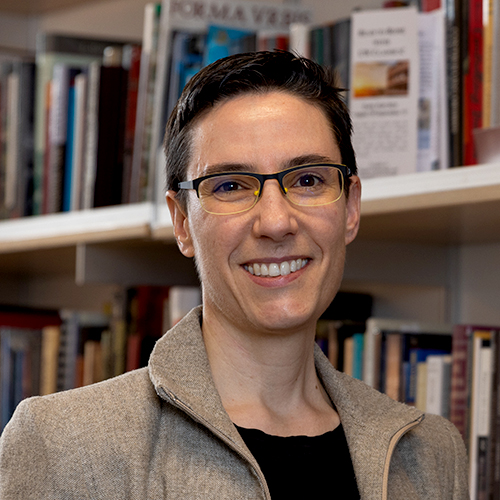Americans turn on lights, plug in coffeemakers, and charge cellphones without a thought to the electricity required. But in parts of India, many households still lack electrical power, despite the nation’s intention more than six decades ago to bring electricity to all its citizens.
“Electrification was central to how early nationalists and planners conceptualized Indian development, and huge sums were spent on the project from independence until now,” says Sunila S. Kale, assistant professor ofinternational studies. “Yet despite all this, nearly 400 million Indians have no access to electricity. Although India has less than a fifth of the world’s population, it has close to 40 percent of the world’s population without access to electricity.”
Kale explores some of the reasons for India’s lag in providing electrical power in her book Electrifying India: Regional Political Economies of Development, to be published by Stanford University Press in Spring 2014. The book has already garnered a top award from the American Institute for Indian Studies.

Kale had intended to focus on India’s move to privatize its energy industry in the 1990s, intrigued by Indian states’ varied responses to privatization. But as she researched the topic, she found that those responses had a historical basis, which led her to broaden the scope of her project. “I had to go back and look at what happened from the 1940s through the 1980s—how state governments had expanded electricity,” says Kale. “Choices made in that early period had a huge influence on privatization later on.”
Electrifying India first explores New Delhi’s changing views about electricity over time and then offers case studies of three Indian states where responses to privatization in the 1990s diverged wildly, ranging from approval to swift rejection. Kale delves into political and socioeconomic factors that had shaped each state’s energy policy.
The story begins in the 1940s, at the time of India’s independence. Electricity was available in cities and towns but not most rural areas. There was much debate about whether the electricity sector should be controlled centrally or by individual states, with supporters of central control arguing that state control would lead to uneven development. Despite this concern, pressure from state leaders led to the establishment of state utilities in 1948.
Although India has less than a fifth of the world’s population, it has close to 40 percent of the world’s population without access to electricity.
Those early concerns about uneven development proved to be prescient. Today, some state governments provide electricity to most rural households, enabling farmers to pump up groundwater resources. Some even offer electrical subsidies to farmers to encourage the use of electricity for irrigation. Yet in other states, rural communities are still off the grid.
To identify the reasons for this uneven development, Kale spent considerable time trying to reconstruct, from often scanty records in the State Electricity Boards, the history of electrification, investments, and policies in three states: Odisha, Andhra Pradesh, and Maharashtra, . “In some states, there was a complete and comprehensive collection of annual reports,” says Kale. “In others, not a single report could be found. Even that gave me insight into the differential capacity of the states.”
Kale’s research suggests that the most significant factor in rural electrification has been representation of rural communities in state government. In Odisha, where few powerful political leaders come from rural communities, only 40% of households can rely on electricity for lighting, with the percentage dropping even lower in rural areas. The state of Andhra Pradesh has fared better, with a slow and steady electrification program that speeded up with farmer protests in the 1970s. “There was a lot of social foment in India in the 70s, and this was part of that,” says Kale. Maharashtra, where rural leaders have played a sizable role in the state government, has had the most success at rural electrification, though some districts and farmer groups have fared better than others.

The same factors that led Maharashtra to have a more robust electrical program in rural areas, and to subsidize electricity use by agriculture and agro-industries, also led that state to reject privatization in the 1990s. "The perception was that privatization of its electricity distribution utility would threaten the regime of subsidies," explains Kale. Privatization was also rejected In Andhra Pradesh due to strong opposition from farmers and their political allies. At the other end of the spectrum, Odisha, lacking rural representation, had little opposition when it voted to privatize.
Does Kale believe that the millions of Indians still waiting for electrical power will see change anytime soon? “In the near future, no,” says Kale. “In the long term, yes.” She explains that some central agencies are now stepping in to assist state governments in carrying out rural electrification. There are also experiments in micro-grids, or distributed generation, taking place in rural villages, using alternative energy sources ranging from solar to sugar pulp.
“The government is very motivated to knit the national system together in one central grid,” says Kale. “Over time, I think it will happen.”
More Stories

Lifting Marginalized Voices — from Ancient Rome
"Interesting, frustrating, and necessary,” is how Sarah Levin-Richardson, professor of Classics, describes her research into the lives of enslaved individuals in the ancient world.

The Truth About Public Speaking
Becoming an effective public speaker requires planning and practice. Professor Matt McGarrity and consultants at the UW Center for Speech & Debate are available to help.

How a Chemistry Lab is Transforming Clinical Research
Ashleigh Theberge's UW lab creates bioanalytical chemistry tools. Some are transforming how clinical studies can be conducted.